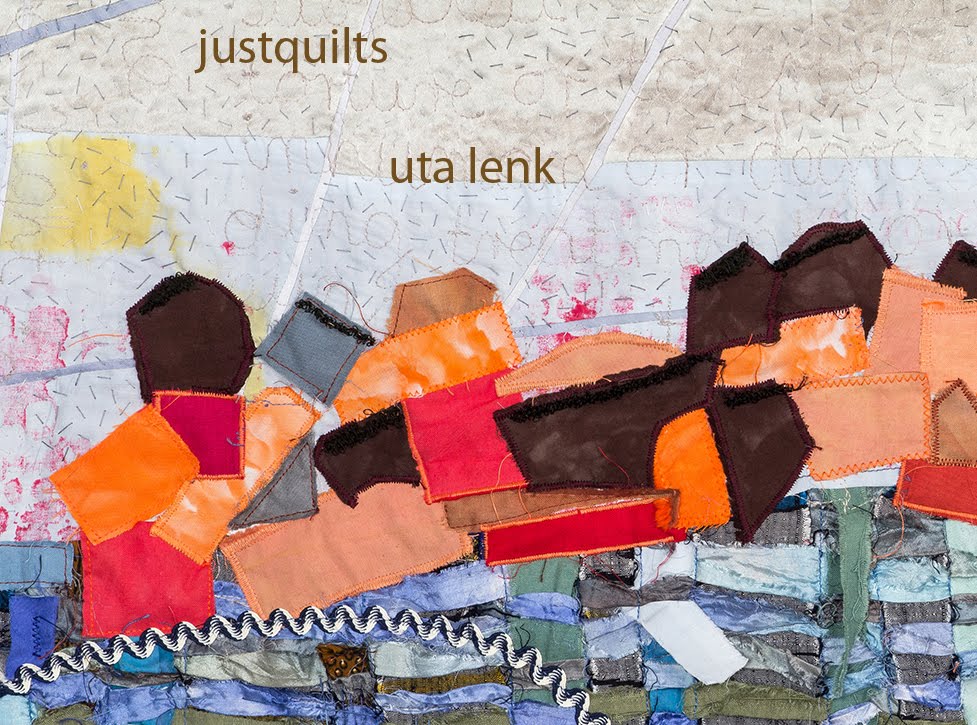When we had the art exhibit in shop windows of our little town in May that I reported about on my German blog, the organizer of it all had also suggested that every participating artist donate one of their works for an art auction. The revenues of this auction were supposed to be donated for a help organization for children with cancer.
I had donated a quilt from my series ‚Metamorphoses’:
Metamorphoses XI: Weber’s Gold was made in 2006, after I had been given a few pieces of golden-colored silk. They had been cut for a dress, which had never been finished. These pieces were the original inspiration for this quilt, and the donator’s name (Weber) also led to the quilt’s name.
All of the donated pieces of art had been on display in one of the shop windows during the days before the scheduled auction date. However, on the day of auction it rained heavily, there were hardly any people there to attend the auction, and the whole thing was cancelled. At first it wasn’t clear whether it was only postponed or had been called off entirely. By now, however, the „Kultursommer“-festival is over and it is not clear whether there will be another good occasion for such an event.
A few days later I was approached by the director of the kindergarten where my son has been going for the past four years. She and her colleague would have liked to bid in the auction for my quilt because they had decided that this finally was the piece they had been looking for for their office, what was going to happen with it? I checked back about a new date for the auction, and when I found out that that was most likely not going to happen, we agreed that she would be very happy to buy the quilt for the minimal bid that had been set for the auction. This is a wonderful way for me to say thank you for four years of loving caretaking of my son. The director had made it very clear that she was happy to give me the money directly and thus let me have the benefits from the sale. However, I have decided to donate the money nevertheless. I have been very much affected by the news from Somalia























































